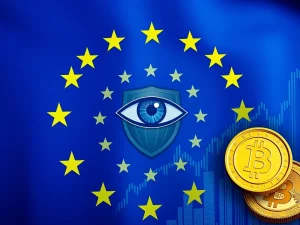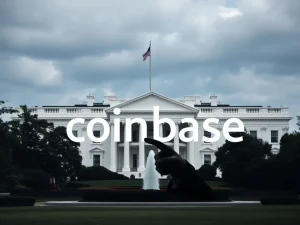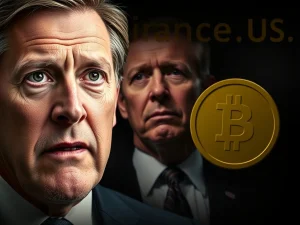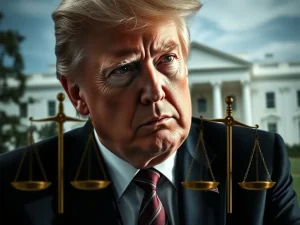US Treasury Debt: An Unprecedented Move to Tackle $36.7 Trillion with Venmo & PayPal
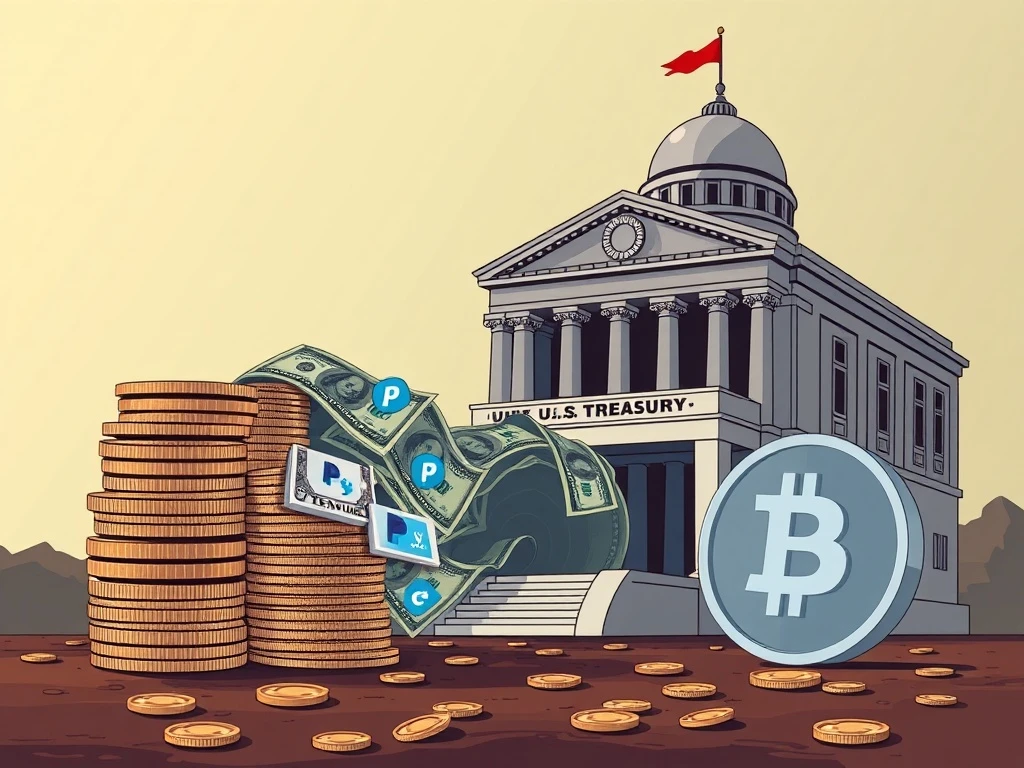
For those of us deeply entrenched in the world of digital assets, the recent news from the US Treasury might seem a bit… analog. While the crypto space buzzes with innovation, the US Treasury has made a significant, albeit traditional, leap into modern finance by integrating Venmo and PayPal for its long-standing ‘Gifts to Reduce the Public Debt’ program. This move, announced in mid-July 2025, aims to make it easier for everyday Americans to contribute to the nation’s colossal US Treasury Debt. But what does this mean for civic participation, and perhaps more importantly for our audience, what does it signal about the government’s stance on digital currencies?
Tackling the US Treasury Debt: A New Digital Frontier?
The United States faces a staggering financial challenge: a national debt that has ballooned to an estimated $36.7 trillion. In an effort to engage citizens in addressing this monumental sum, the U.S. Treasury Department has expanded its ‘Gifts to Reduce the Public Debt’ program. This initiative, which has historically accepted donations totaling $67.3 million since its inception, now includes popular digital payment platforms Venmo and PayPal as official donation channels. This marks a notable shift in how the government facilitates civic financial participation.
While the immediate fiscal impact of these individual contributions on the immense US Treasury Debt is, by expert consensus, negligible, the move itself is significant. It represents a broader push to modernize government financial processes and engage younger, tech-savvy demographics who are accustomed to seamless digital transactions. The Treasury’s aim is to foster a sense of collective responsibility, making it as simple as possible for Americans to contribute, even if symbolically, to the nation’s financial well-being.
Venmo and PayPal Donations: Streamlining Civic Giving
The integration of Venmo and PayPal into the Treasury’s donation framework is designed for convenience. Users can now make fiat currency donations directly via Pay.gov, the federal government’s official payments platform. This means that contributing to the national debt is now as easy as sending money to a friend or paying for an online purchase.
Here’s how the Venmo and PayPal Donations work:
- Accessibility: Americans can now use their existing Venmo or PayPal accounts.
- Simplicity: Donations are processed through Pay.gov, a familiar interface for many government transactions.
- Transparency: Pay.gov ensures a clear confirmation process for each contribution.
- Flexibility: Alongside digital wallets, traditional banking methods remain available.
This initiative leverages platforms that are deeply embedded in daily financial habits, potentially reaching millions who might not otherwise consider contributing through more traditional means. While neither Venmo nor PayPal executives have publicly commented on the partnership, the collaboration underscores a growing trend of government agencies adopting widely used commercial technologies to enhance public engagement.
The Scale of National Debt vs. Individual Contributions
Despite the ease of making Venmo and PayPal donations, the sheer scale of the National Debt casts a long shadow over the program’s potential effectiveness. Critics and analysts alike are quick to point out the vast disparity between individual contributions and the $36.7 trillion figure. To put it in perspective, one analysis humorously noted that each American would need to donate approximately 1/500th of a cent to the total debt through this program, highlighting its symbolic rather than substantive impact.
Social media reactions have been predictably mixed:
- Skepticism: Many users express doubt about the program’s ability to make a real dent in the debt, viewing it as a publicity stunt.
- Civic Duty: Others see it as a commendable symbolic gesture, fostering a sense of collective responsibility and encouraging awareness of the national fiscal situation.
- Calls for Reform: A significant portion of the public believes that the focus should be on systemic fiscal reforms rather than individual donations.
The program’s design, which currently lacks incentives such as tax deductions or matching contributions, further limits its long-term appeal for many. While it simplifies the donation process, it doesn’t address the fundamental drivers of the National Debt, such as rising healthcare costs, structural budget deficits, or geopolitical expenditures.
Government Digital Payments: A Glimpse into the Future?
The Treasury’s embrace of Venmo and PayPal is part of a broader, global trend toward modernizing Government Digital Payments. Across the world, governments are exploring and implementing digital solutions to streamline everything from tax collection to social welfare disbursements. This initiative, while modest, signals the U.S. government’s recognition of the evolving digital landscape and the need to adapt its financial interactions with citizens.
This move could be seen as a stepping stone. If successful in engaging a wider audience, it might pave the way for more sophisticated digital payment integrations in the future, potentially leading to more efficient and accessible government services. It reflects an understanding that convenience is key to public participation in an increasingly digital world. However, the current scope is limited to donations, not broader transactional services.
Cryptocurrency Debt: The Unseen Frontier
Perhaps the most striking aspect of this new initiative, especially for our readers, is its explicit exclusion of cryptocurrency. Despite the burgeoning role of digital assets in global finance and the increasing number of individuals holding crypto, the U.S. Treasury has chosen to maintain a traditional, fiat-based donation system. This decision ensures that there is no immediate impact on digital asset markets, but it also highlights the government’s cautious and often hesitant approach to integrating crypto into its official financial mechanisms.
The reasons for this exclusion are likely multi-faceted:
- Regulatory Uncertainty: The lack of a comprehensive regulatory framework for cryptocurrencies in the U.S. makes their integration into government systems complex.
- Volatility Concerns: The inherent price volatility of most cryptocurrencies could pose accounting and risk management challenges for the Treasury.
- Technological Complexity: Integrating various blockchain networks and ensuring secure, compliant transactions would require significant infrastructure development.
This cautious stance means that while citizens can easily contribute fiat through Venmo or PayPal to reduce the Cryptocurrency Debt (or rather, the national debt, given the exclusion of crypto), they cannot directly use Bitcoin, Ethereum, or any other digital asset for this purpose. This decision underscores the ongoing debate about how and when governments will fully embrace digital assets, if at all, for official financial operations. Prominent voices, including investor Ray Dalio, have consistently emphasized the need for broader fiscal reforms rather than symbolic payment method updates, suggesting that addressing the root causes of the debt is far more critical than how donations are collected.
The Bigger Picture: Beyond Digital Wallets
While the integration of Venmo and PayPal is a step towards modernizing government interactions, it doesn’t address the underlying systemic fiscal challenges. Analysts continue to stress that without significant legislative and policy changes — such as addressing rising healthcare costs, reforming entitlement programs, or implementing new revenue strategies — the national debt will continue its upward trajectory. The program, in its current form, is a public relations effort more than a substantive solution, designed to raise awareness and encourage a sense of civic participation rather than fundamentally alter the nation’s financial course.
Conclusion: A Symbolic Step in a Long Journey
The U.S. Treasury’s decision to accept Venmo and PayPal donations for the national debt represents a modest yet significant step in modernizing federal payment ecosystems. By aligning with prevalent digital transaction trends, the Treasury aims to simplify civic engagement and foster a sense of collective responsibility. However, its immediate impact is inherently constrained by the vast scale of the national deficit and the absence of complementary structural reforms.
For the cryptocurrency community, this initiative serves as a poignant reminder of the government’s measured approach to digital assets. While digital wallets like Venmo and PayPal are embraced, the door remains closed to direct crypto contributions for national debt reduction, highlighting the ongoing regulatory and integration hurdles. The legacy of this program will depend not just on the dollars collected, but on whether it catalyzes broader conversations about sustainable fiscal policies or remains merely a fleeting symbol of technological adaptation in government operations.
Frequently Asked Questions (FAQs)
Q1: Can I donate cryptocurrency directly to reduce the U.S. National Debt?
No, currently the U.S. Treasury’s ‘Gifts to Reduce the Public Debt’ program explicitly excludes cryptocurrency donations. You can only contribute fiat currency through methods like Venmo, PayPal, or traditional banking.
Q2: How much impact will my Venmo or PayPal donation have on the $36.7 trillion National Debt?
While every contribution is appreciated, the immediate fiscal impact of individual donations on the $36.7 trillion national debt is negligible. The program is largely symbolic, aiming to foster civic engagement and awareness rather than significantly reduce the debt directly.
Q3: Are donations to reduce the National Debt tax-deductible?
The article mentions that critics argue the initiative lacks mechanisms to incentivize participation, such as tax deductions. It’s best to consult the official U.S. Treasury website or a tax professional for the most accurate and up-to-date information regarding the tax-deductibility of such gifts.
Q4: Why did the U.S. Treasury choose Venmo and PayPal but not cryptocurrency?
The Treasury likely chose Venmo and PayPal due to their widespread adoption, established regulatory frameworks for fiat transactions, and ease of integration. The exclusion of cryptocurrency is likely due to ongoing regulatory uncertainty, price volatility concerns, and the technical complexities involved in handling various digital assets within government financial systems.
Q5: Is this program a long-term solution to the U.S. National Debt?
No, experts and critics agree that this program is not a substantive long-term solution to the U.S. National Debt. It is primarily a symbolic gesture aimed at modernizing donation methods and raising public awareness. Addressing the national debt requires broader fiscal reforms and policy changes.
Q6: How can I make a donation through Venmo or PayPal?
You can make a donation through Venmo or PayPal by visiting Pay.gov, which is the federal government’s official payments platform. From there, you can select the ‘Gifts to Reduce the Public Debt’ option and choose your preferred digital payment method.

